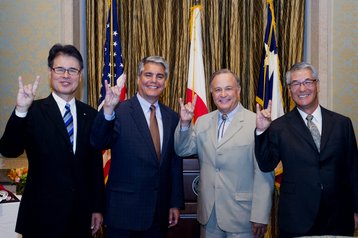A Japanese government body is investing $13 million in a University of Texas project to investigate the use of solar power and high-voltage DC power distribution for supercomputers.
Japan’s New Energy and Industrial Technology Development Organization (NEDO), a part of the Japanese government, has put up the money for University of Texas to investigate using a high-voltage direct current (HVDC) power system, complete with its own solar farm, as a way to run data centers more efficiently.
Solar farm
The Japanese agency is picking up the costs of installing and deploying the DC infrastructure, along with a 250 kilowatt solar farm to provide power when possible, at the Texas Advanced Computing Center (TACC), on the J J Pickle research campus in North Austin.
An additional $4 million in computing power is being installed with the project. The installation work has been contracted to Japan’s NTT Facilities (NTTF).
The DC distribution system will eliminate conversions from DC to AC at the solar panels, at the battery backup system, and at the server racks.
Since much of the saving with DC comes from the reduction in these power conversions, the solar farm, even though it is not providing 100 percent of the data center power, will allow the study of the power process from end-to-end.
DC power has been proposed for data centers for some years, but has met with minimal interest from data center operators and customers, despite the apparent efficiency gains.
There is significant inertia to simply continue to use AC power, and critics have pointed out that data centers contain so much diverse equipment that a move across to full DC operation would be difficult to achieve.
However, the rise of local generation could make DC more interesting, and solar panels produce DC power so a move to DC distribution may have clearer benefits.
And because the solar farm cannot produce all of the power for the test data center, there can be a direct comparison between the two power sources using the same data center workload.
“NEDO is pleased to conclude this memorandum of understanding with the secretary of state of Texas regarding high-voltage direct current feeding technology at the Texas Advanced Computing Center of The University of Texas at Austin,” said NEDO executive director Fumio Ueda. “Through this project, we hope to verify the energy efficiency of the new technology and to disseminate it in the US.”
Texas is only the latest in a series of US universities to host NEDO-funded projects. In Hawaii, a NEDO-funded project demonstrated energy management systems for the electric grid. In New Mexico, NEDO demonstrated a smart home with Los Alamos National Laboratory, and in a project with the State University of New York achieved net zero energy use in a nanotechnology research building, according to a UT press release.

